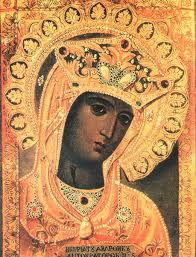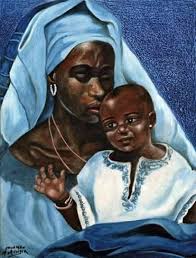Church of England ‘to refuse to back change to allow same-sex marriages’









Church of England ‘to refuse to back change to allow same-sex marriages’
The Church of England’s bishops have reportedly refused to back a change that would allow priests to marry same-sex couples.

The bishops met on Tuesday to finalise recommendations after five years of consultation and debate on the Church’s position on sexuality, according to the BBC.
The broadcaster said it spoke with several bishops present at the meeting who said the Church teaching that Holy Matrimony exists only between one man and one woman would not change nor be put to a vote at the General Synod next month.
Same-sex marriage has been legal in England and Wales since 2013, but the Church did not change its teaching when the law changed.
The Church of England website states that while ministers cannot carry out or bless same-sex marriages “your local church is still there for you” with people being welcomed there to pray “or ask us to pray for you”.
The decision not to back the change ahead of the Synod puts the Church at odds with the Church of Scotland, which voted in May at its General Assembly to allow parish ministers and deacons to marry same-sex couples if they wish.
In August, the Archbishop of Canterbury, Justin Welby, acknowledged that there are “deep differences” within the Church, as he faced criticism for reaffirming a 1998 Anglican declaration rejecting same-sex marriage.
Comedian and television presenter Sandi Toksvig, who is gay, said the lives of LGBTQ+ people were “at stake” following the religious leader’s “horrible mistake” in reaffirming a resolution which stated that marriage is “between a man and a woman”, and that same-sex relationships are “incompatible with scripture”.
Mr Welby responded by saying that the Anglican Communion, of which the Church of England is part, is a “complicated group of churches” with “deep differences in many areas”.
But he told the Lambeth Conference, a meeting of Anglican bishops which took place this summer, that he could not and would not punish churches for conducting gay marriages.
In November, the Bishop of Oxford became the most senior cleric to call for change when he said the Church should allow same-sex marriage for both its congregation and its clergy.
The Rt Rev Steven Croft said he wanted to acknowledge the “acute pain and distress of LGBTQ+ people in the life of the Church”.
In a lengthy essay, the bishop said he was sorry that the church has been “so slow” to “reach better decisions and practice on these matters” and apologised for his own views being “slow to change”.
But the bishop also said clergy must have the option not to opt in to any new arrangements, saying that it should be recognised that it is a “legitimate and honourable position” for those who want to keep a “traditional view of marriage and human sexuality”.
Reference: The Independent: Benjamin Cooper
Emanuela Orlandi vanished 40 years ago. Why is the Vatican just now opening an investigation?











Emanuela Orlandi vanished 40 years ago. Why is the Vatican just now opening an investigation?
The motivation behind most kidnappings emerges without much digging.
But nearly 40 years after Emanuela Orlandi went missing, her family is still on a quest to find out why she was targeted one fateful evening in 1983. The 15-year-old daughter of a Vatican employee, Emanuela vanished on her way home from a flute lesson in Rome and her whereabouts remain unknown to this day.
The myriad of unsubstantiated theories behind her kidnapping range from a supposed plot by the KGB to release a man who tried to assassinate Pope John Paul II, to claims that the abduction was orchestrated by senior staff at the Vatican and executed by members of the Italian mafia Banda Della Magliana— right after Emanuela allegedly told a friend that “someone close to the Pope” made sexual advances towards her.
The case and first-hand testimonies from witnesses, none of which have yielded concrete leads for investigators or brought definitive answers for the family for decades, were revisited in the Netflix documentary Vatican Girl: The Disappearance of Emanuela Orlandi, released last October.
The four-part film brought renewed interest into what remains the Vatican’s only open missing person case, with the city’s top prosecutor Alessandro Diddi announcing on 10 January that he would be reopening an investigation into the cold case, local media reported.
The Orlandi family, who have maintained that the Vatican is withholding vital information, welcomed the development with caution, warning that they are expecting a “serious” investigation and not “[more] propaganda,” Anadolu Agency reported. At a sit-in near the Vatican on what would have been Emanuela’s 55th birthday, her brother Pietro Orlandi pointed at a poster with the images of the last three Popes and the words “silence makes them accomplices” in Italian.
“To me, she is not dead and I will not quit [looking for her] until the remains are found. It is a duty to continue looking for her,” Mr Pietro said on Saturday, speaking in Italian, according to TODAY Attualità.
The Orlandi family’s attorney Laura Sgro also told Italian news agency Il Fatto Quotidiano that they believed at least a dozen of people “immediately available” to the prosecution should be interrogated in the newly opened investigation.
It is the first time that the Vatican has initiated a formal investigation into the kidnapping. For years, the state has said that while it intended to fully cooperate with officials, the abduction had taken place on Italian soil, per the New York Times.

Ms Sgro and Mr Orlandi also announced a new initiative last month to convene a parliamentary commission of inquest into the case.
Three previous initiatives in the Italian Parliament failed to get off the ground, but Ms Sgro and opposition lawmaker Carlo Calenda insisted that the Vatican couldn’t consider the case closed when there were so many questions left unanswered, according to the Associated Press.
The beginning of a four-decades-old mystery
Emanuela’s father Ercole Orlandi worked as a messenger for the Vatican and the family lived in Vatican City State.
She vanished on 22 June 1983 after leaving her family’s Vatican City apartment to go to a music lesson in Rome.
Before disappearing, Emanuela phoned her house and said that a male representative from Avon had approached her and offered her a job.
According to the documentary, the family received several mysterious calls in the aftermath of the abduction. The first calls alerted them that a girl resembling Emanuela but by the name of “Barbara” or “Barbarella” had reportedly told the callers she had decided to run away from home.
Emanuela’s family contacted the police the same day she vanished but was urged not to report her missing until the next day.
Posters with her face were shared throughout the city and the missing person’s case soon gripped the entire nation.

Pope John Paul II even appealed to her captors while delivering his angelus a week after the abduction, and fruitlessly pleaded for them to set her free.
The following calls grew increasingly dark, with a man later dubbed “il Americano” — The American — saying that Emanuela would soon be killed. At one point, the family received a recording of a woman wailing in pain.
A family representative told United Press International (UPI) at the time that they believed the disturbing sounds were not made by Emanuela, but other parts of the recording were believed to be her voice.
Since then, the family has received a plethora of tips and leads from people claiming to be behind or pointing the finger at the Vatican for plotting Emanuela’s kidnapping. To this day, no theory has been confirmed.
An unlikely trade-in
One of the mysterious callers first claimed that they had captured Emanuela to demand the release of Mehmet Ali AÄca, a Turkish national who shot John Paul in 1981.The theory gained momentum also because, on the day of Emanuela’s kidnapping, the Pope had returned to his native Poland for a visit, leading the public to believe that the abduction had been carefully planned in an attempt to send a message to the Vatican.
According to the documentary, officials investigating the kidnappings still struggled to identify what organisation was behind it. That was in part because AÄca changed the story about who ordered the Pope’s assassination.
Throughout the years, AÄca has alleged he acted on behalf of the right-wing Turkish terrorist group Gray Wolves, which he was a member of, and later saying the Soviet intelligence service KGB was actually behind the plot, per The History Channel.
AÄca claimed in a 1985 prison interview that Emanuela had indeed been taken in exchange for his freedom, the Ocala Star-Banner reported — and said that she “was safe, not in danger,” but offered no further proof.
AÄca served 20 years in an Italian prison before he was extradited to Turkey in 2000. He was released on parole in 2006.
The Vatican Bank’s alleged links to the criminal underworld
In the Netflix documentary, a former lover of Banda Della Magliana mafia boss Enrico De Pedis claims that she held Emanuela in her apartment at the request of De Pedis. The woman, Sabrina Minardi, alleged the teen was at her apartment for 10 days before she was returned to a man “dressed as a priest” near the Vatican.
Minardi, who first came forward with her testimony to a journalist at the Italian television programme Chi l’ha visto?, also said on the Netflix series that De Pedis had told her the abduction stemmed from a game “of power.”
In 2011, once member of the Banda della Magliana Antonio Mancini also told the Italian outlet La Stampa that Emanuela had been kidnapped to force the Vatican to return large sums of money purportedly lent to its bank by criminal organisations.
In 2012, De Pedis’ body was exhumed from the crypt of a Roman basilica. The search turned up no link.
The Vatican ‘stolen’ papers
In 2017, Italian investigative journalist Emiliano Fittipaldi published a five-page document that was allegedly stolen from a locked cabinet in the Vatican.
Mr Fittipaldi was also prosecuted and cleared by an Italian court for publishing financial documents stolen from the Vatican known as “Vatileaks,” per Reuters.
The journalist said the document pertaining to Emanuela, allegedly written by a cardinal, listed expenses for Emanuela’s accommodations in London between 1983 and 1997. On Vatican Girl, Mr Fittipaldi theorises even further that a final large expense would explain the potential transport of Emanuela’s body back to Italy.
The Vatican has denied the authenticity of the document.
The sex abuse theory
In 2012, Father Gabriele Amorth, once the leading exorcist at the Vatican, told Italian newspaper La Stampa that Emanuela had been kidnapped for sexual exploitation.
“It has already previously been stated by (deceased) monsignor Simeone Duca, an archivist at the Vatican, who was asked to recruit girls for parties with the help of the Vatican gendarmes,” a translation of Amorth’s interview by The Belfast Telegraph reads.
“The network involved diplomatic personnel from a foreign embassy to the Holy See. I believe Emanuela ended up a victim of this circle.”

In the Netflix series, a high school friend of Emanuela came forward with claims that the missing girl had phoned her just a week before she went missing to confide that “someone close to the Pope” had “bothered her” while she was strolling in the Vatican gardens.
The friend, who asked not to be named, said Emanuela communicated the person in question had made sexual advances towards her.
The empty tombs
In 2017, the Orlandi family attorney received an anonymous letter suggesting her remains were buried in the Teutonic Cemetery in Vatican city.
The letter referred to a marble statue of an angel above a tomb where two German princesses were believed buried and said: “Look where the angel is pointing.”
The tomb turned out to be completely empty and the lack of a discovery only raised new questions.

The Vatican said in a statement at the time that the opening of the tombs “yielded a negative outcome. No human remains nor funereal urns were found.”
It said the inspection of Princess Sophie von Hohenlohe’s tomb turned up an underground chamber measuring roughly 4 by 3.7 metres (13 by 12 feet) that was “completely empty.” Then the stone lid of an adjacent sarcophagus of Princess Charlotte Federica di Mecklenburg was removed and inside “no human remains were found,” the Vatican said.
A relentless quest to find Emanuela
For 40 years, Pietro Orlandi and his siblings have continued to lead efforts to find Emanuela.
The new inquest into Emanuela’s disappearance has brought new hope that her family could finally get long-awaited and relentlessly sought answers.
When interviewed for Vatican Girl, Mr Orlandi said that during an exchange with Pope Francis shortly after he became Pope, the pontiff told him that Emanuela “is in heaven.” The Vatican has long denied any connection to the kidnapping while vowing to cooperate with the investigation.

Mr Orlandi has said he only wishes for the truth to finally come to light, so his 92-year-old mother “can at least bring flowers to [Emanuela’s] grave,” if she is dead.
“The only thing I’m sure of is that in the Vatican, they know the truth,” Mr Orlandi says in the Netflix series. “They know what happened that day and now I’m asking them to speak that truth because it is about time they did. Too many years have gone by.”
The Independent has reached out to the Vatican’s press office for comment.
Euston gunman fired into church after funeral of cancer victim, 20, and her mother










Euston gunman fired into church after funeral of cancer victim, 20, and her mother
Aseven-year-old girl was caught in the crossfire of a ‘revenge attack’ in north London, as a gunman fired into a busy church after a funeral trying to hunt down a target, it is claimed.

Police are hunting down the gunmen responsible for a devastating mass shooting that injured six people.
The victims were shot as they exited a funeral service for British-Colombian cancer victim Sara Sanchez, 20, and her mother Fresia Calderon, 50, outside St Aloysius church on Phoenix Road opposite Euston railway station about 1.30pm on Saturday.
A police source told The Mail on Sunday a man jumped out of the car and started firing into the crowd as white doves – symbols of peace – were released.
It is believed the gunman may have been targeting a guest at the funeral as part of a revenge attack.
They said: ‘People are saying the intended target of the shooting was a man who attended the service,’ one woman from the funeral said last night. ‘There’s speculation that it was some sort of revenge attack.’
The Met Police said six people were injured in the attack; four women aged 21, 41, 48 and 54, along with two children aged 12 and seven.



gunmen fired into the group outside the church before fleeing the scene (Picture: PA)© Provided by Metro
It marks one of the worst mass shootings in London for decades.
The seven-year-old girl ‘remains in hospital in a life threatening condition’ after she was rushed to a hospital with a major trauma centre as a priority.
Horrified witnesses revealed they had to run for cover as a black car pulled up and ‘started shooting bullets’ out of nowhere into the crowd, who had gathered to celebrate the lives of the mother-daughter duo, who died within a month of each other in November.
One witness claimed a suspect appeared to be chased into nearby Euston station.
No arrests have been made and Met Police are appealing for witnesses to come forward and assist with the investigation.
Fresia Calderon died after suffering a pulmonary embolism after she arrived to Heathrow from Colombia on November 5.
Her daughter Sara Sanchez, who had been diagnosed with leukaemia three years ago, succumbed 25 days later after ‘giving up all hope’, according to a family member.
Sara was diagnosed with leukaemia in May 2020 and after six months of chemotherapy experienced two years in remission. She relapsed in July 2021 and required a bone marrow transplant.
It was her mother who instilled hope that she would recover on days when she otherwise felt like giving up. So after Fresia’s sudden and unexpected death, relatives say she struggled to carry on.
The duo, along with Sara’s younger brother, had travelled to Colombia for a ‘final goodbye’ and were on their way back when Fresia collapsed in front of both children.
Father Jeremy Trood, who conducted the service at St Aloysius church, said: ‘I heard a big bang and police are in the church at moment. People who were leaving the church have rushed back in.’
He described the ceremony as a ‘Requiem Mass’ rather than a funeral.
‘They were very scared, people sheltered in the church until the police said they can leave but some of them were so scared they had to wait a while to get their confidence back up to go outside.
‘But I was in the church the whole time so I didn’t actually see what had happened.’
Pictures posted on Instagram last night from the funeral showed how a photograph of Fresia and Sara hugging each other had been placed by the altar during the service.
Mourners invited to the ‘celebration mass’ for the two women were asked to wear white.
Stephanie, who lives near the church, said her 11-year-old daughter had been walking home from a friend’s house and saw someone lying on the ground before the police arrived. She added that an emergency services helicopter had made an aborted landing in front of their home before flying off and eventually landing in a nearby school playground.
When emergency services arrived at the scene, they found the victims suffering bullet wounds on a small side street near Euston station.
It is the latest case of innocent bystanders getting caught up gun crime plaguing the UK.
Elle Edwards, 26, was shot dead in the beer garden of the Lighthouse Pub in Wallasey, Merseyside, on Christmas Eve.
Deliveroo moped rider Guilherme Messias Da Silva, 23, was hit and killed by a driver who was shot eight times in a gang shooting in Brixton last October.
Nine-year-old Olivia Pratt-Korbel was shot dead after a masked gunman burst into her home in Dovecot, Liverpool last August.
Council worker Ashley Dale, 28, suffered fatal gunshot wounds in the garden of her home in Old Swan, Liverpool, last August.
19-year-old Rio Jones of Liverpool was last week jailed for life for opening fire in Toxteth, shooting a 15-year-old schoolgirl in the neck in March 2022.
Three-year-old Sophie Martyn was killed alongside her father Lee during a shooting spree in Plymouth in which six people died in August 2021.
Four gangsters were jailed after fashion student Natalie Bignall, 32 was hit by a stray bullet outside a pub in Hackney, east London in November 2020.
Church of England told to 'sort its own house out' before paying slavery reparations










Church of England told to 'sort its own house out' before paying slavery reparations
The Church of England should fund rural parishes and “sort its own house out” before paying slavery reparations, clergy have told the Archbishop of Canterbury.

This week the Most Rev Justin Welby, said that the establishment of a £100 million fund would "address past wrongs of slavery". However, while he acknowledged that the cash injection comes amid mounting concern over parishes’ “stretched” finances, he said that “it is now time to take action to address our shameful past”.
The Church Commissioners, who handle more than £10 billion of the Church’s assets, announced the pledge following the publication of a report last year which found that much of the institution’s wealth originates from the slave trade.
However, in a letter to the Archbishop, the Revd Marcus Walker, the chairman of the Save the Parish campaign group, said that clergy and lay people are concerned that not enough money is being sent to the Church’s “frontline”.
In the letter, seen by The Telegraph, the rector at Great St Bartholomew’s, London, said that it is “right to feel shame” for the Church’s involvement in and funding of “the horrors of human slavery”.
However, he added: “The Church has shown that it has money when it wants, for matters that it cares about. Before the Church can find £100 million for this new project, it needs to show that it can sort its own house out and fund its frontline.”
Church 'reducing clergy numbers' to cut costs
Revd Walker, who is also a member of General Synod, the Church of England’s legislative body, added that the Church is merging parishes “while reducing clergy numbers to unsustainable levels” in a bid to cut costs.
The Church of England said that the £100 million fund would pay for a programme of investment, research and engagement. It said this would include funding to support “communities affected by historic slavery”, as well as funding to pay for further research into dioceses’, cathedrals’ and parishes’ historic links with slavery.
However, survivors of church-related abuse have also raised concerns that the release of new funds, while they have yet to receive the financial redress they were promised, is “a kick in the teeth”.
Graham, a survivor of abuse by John Smyth, the disgraced QC and evangelist accused of sadomasochistic assaults and the brutal beating of boys at a Christian holiday camp in the 1970s, described the Church’s admission of its role in the slave trade as “a welcome acknowledgment of responsibility”.
However, he added that it is also “a kick in the teeth for victims of church related abuse, still slaves to their trauma and PTSD”
“The Church of England can find £15 million for heating churches, £100 million for historic links to slavery, but is unable to address the plank in its own eye: its responsibility towards victims of church-related abuse”.
“The Church of England has announced an investment fund for slavery, yet, victims of abuse still get nothing,” he added.
While giving evidence to the Independent Inquiry into Child Sexual Abuse (IICSA) in March 2018, Archbishop Justin suggested that the redress scheme for victims of church-related abuse would amount to around £200 million. However, full payments for this scheme have been delayed being paid until 2025.
'Abuse of power'
Sophie Whiting, a survivor of Church-related abuse who is struggling financially due to the delayed payments, said of the new fund to address the Church’s historic links to slavery: “I never want to be pitting one victim against another. If the church was truly serious about making reparations, they would pay the money.
“They have got the money, they don't pay tax on it, they make millions just in interest. This is humiliating for us, and an abuse of power by them."
A spokesperson for the Church Commissioners for England said: “We recognise this investment comes at a time when there are significant financial challenges for many people and churches, and when the Church has commitments to address other wrongs from our past. We will continue to support these groups and remain committed to existing funding obligations.
“In 2022 we announced a 30 per cent increase in our funding of the Church of England, which will amount to £1.2 billion in the next three years.”
Articles-Latest
- Koran burning conviction sparks fury as blasphemy law 'returns to UK'
- Robert Francis Prevost - Pope Leo XIV
- Pope Francis' death follows recent health challenges. Here's what we know about how he died.
- Easter April 2025 - international Celebrations
- The Rule of the twelve psalms -Worthy is the Lamb
- Religion in Africa Before Christianity and Islam
- 6 The Origin of Yahweh
- Dumo Di Milano
- What Did the Crow Tribe Believe In: Discover The Beliefs!
- 7 Reasons Historic Christianity Rejects the Book of Enoch
- 8 Breathtaking Mountain Monasteries Around the World
- Ethiopian Bible is oldest and most complete on earth
- Muhammad Muhammad was a prophet and founder of Islam.
- World Day of the Poor – SVP Christmas Campaign 2024
- Pope Francis to open 5 sacred portals on Christmas Eve — for a ritual that’s never been done before
- The 144,000 in Revelation
- Over 73 dead bodies 'used for meditation', 600 crocs in a pond, found in two Thai temples
- Occultism: Western Occult Tradition
- What is a Mudra
- Blood Sacrifices: Ancient Rituals of Life and Death
Articles-Most Read
- Home
- Let There Be Light
- Plants that feel and Speak
- The Singing Forest
- The Singing Forest-2
- Introduction
- Meditation
- Using Essential Oils for Spiritual Connection
- Heaven Scent
- Plants that Feel and Speak-2
- Purification
- Making the Spiritual Connection
- Anointing
- Essential Oils: The unseen Energies
- The Sanctity of Plants
- The Aroma Of Worship - Introduction
- The Aroma Of Worship-Foreward
- Methods Of Use
- Spiritual Blending
- Handling and Storage






